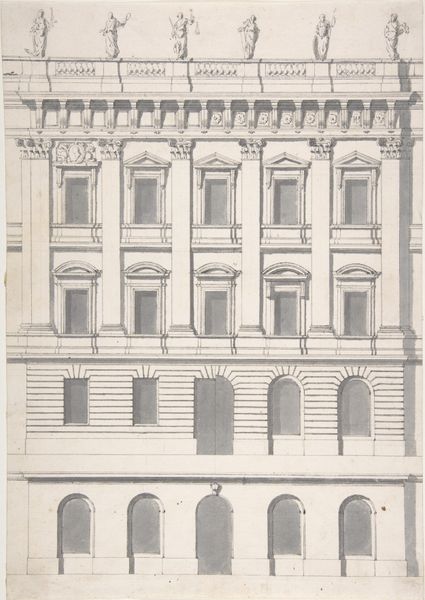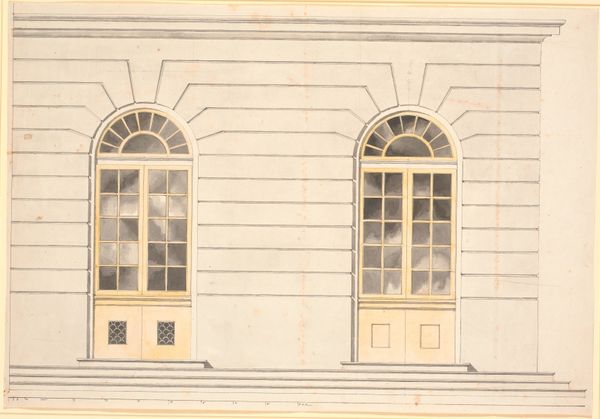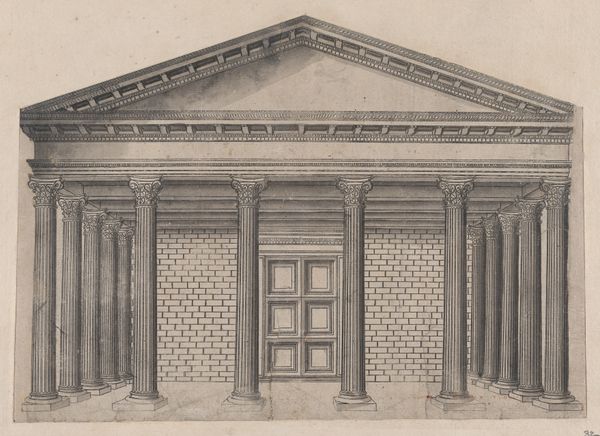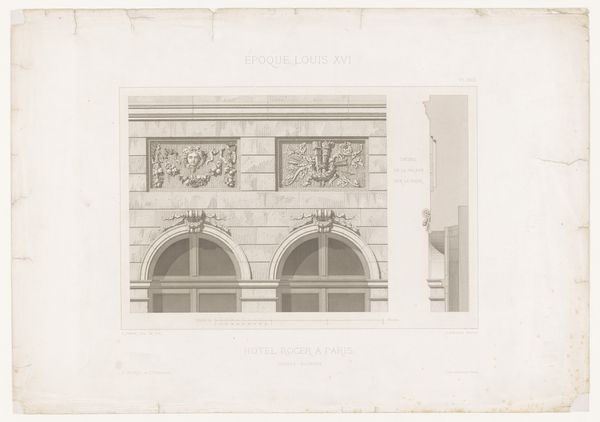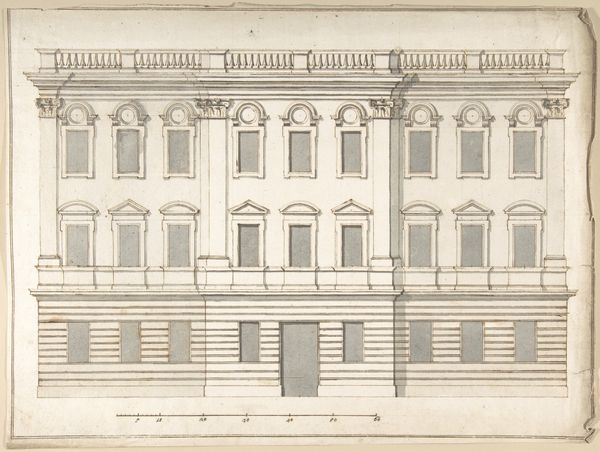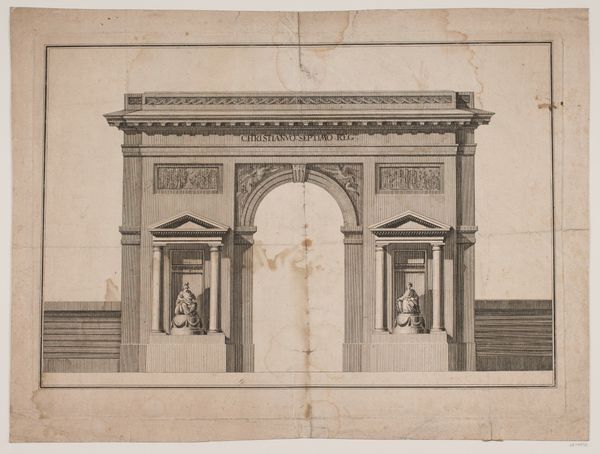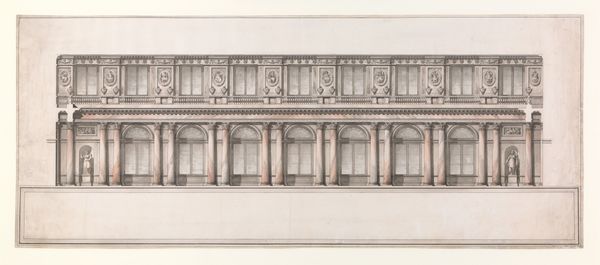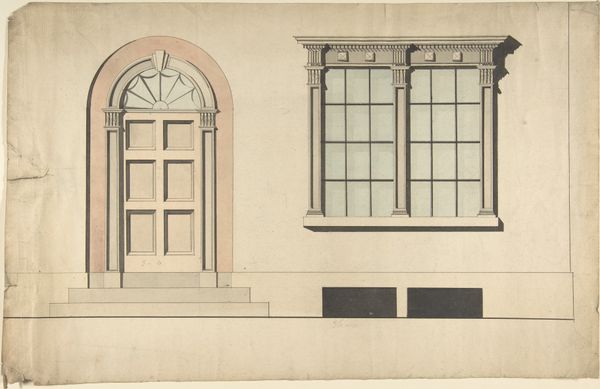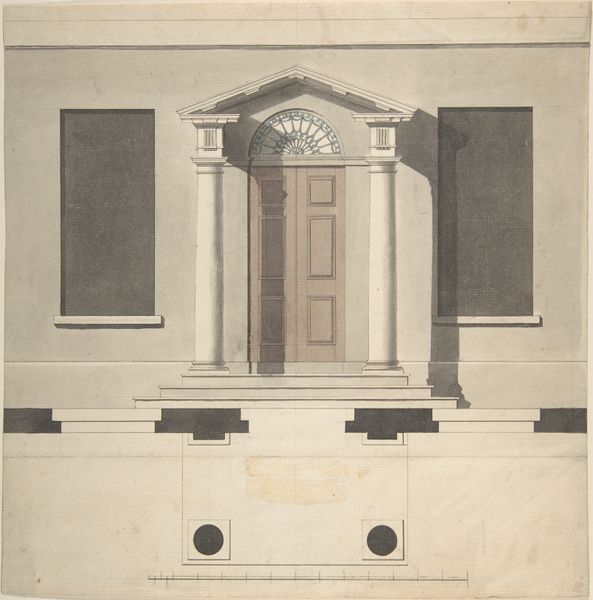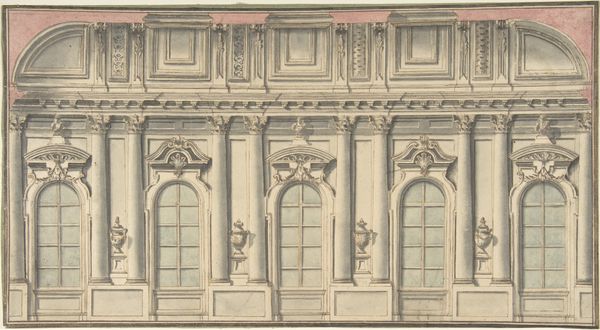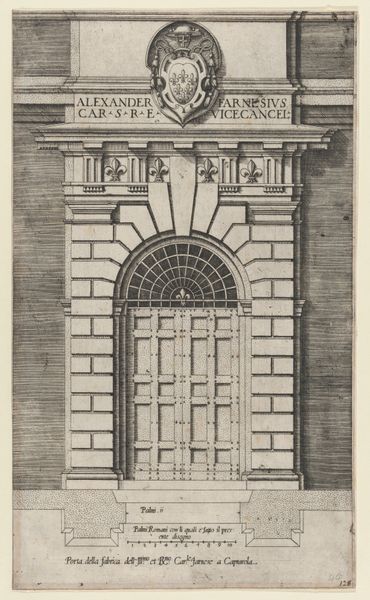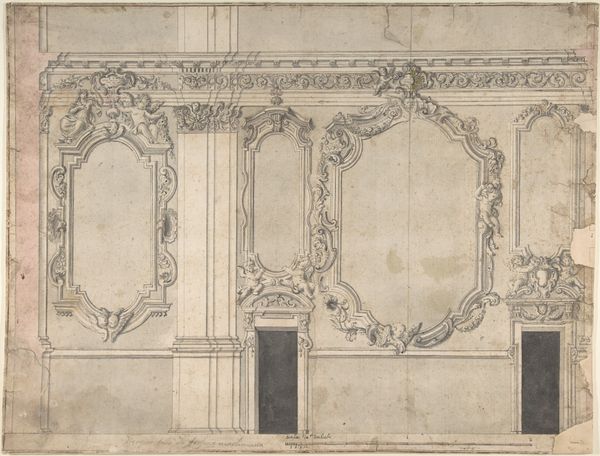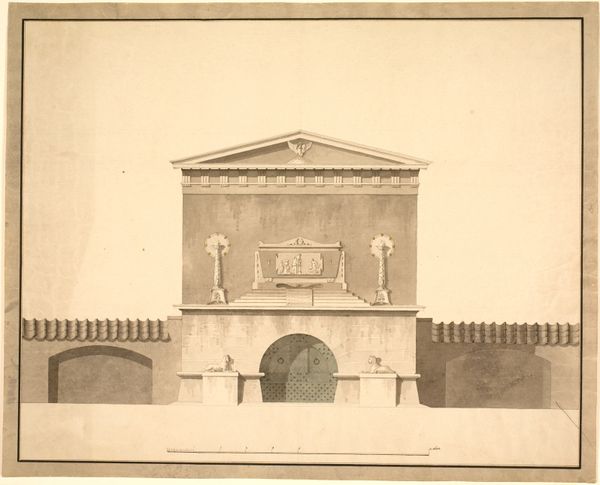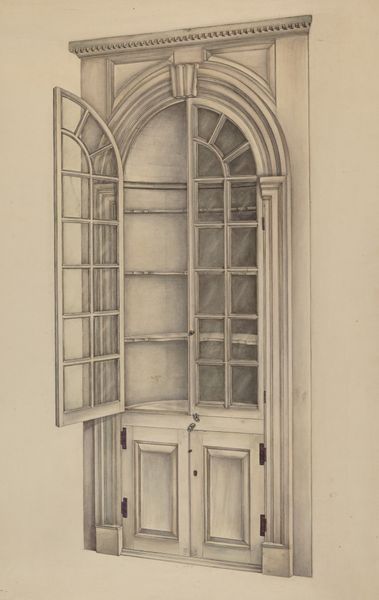
Elevation Design for the Entrance to Orti Farnesiani by Vignola 1710 - 1727
0:00
0:00
drawing, print, paper, ink, architecture
#
drawing
# print
#
paper
#
ink
#
geometric
#
cityscape
#
italian-renaissance
#
architecture
Dimensions: 12-3/4 x 20-13/16 in. (32.4 x 52.9 cm)
Copyright: Public Domain
Curator: Here we have "Elevation Design for the Entrance to Orti Farnesiani by Vignola," a drawing rendered in ink on paper dating from 1710 to 1727. Editor: It feels imposing, even austere, despite the elegant arches. The rigid geometry and muted tones project a certain power, almost a feeling of being excluded. Curator: It certainly reflects the Italian Renaissance aesthetic which this work emerges from, prioritizing geometric forms and clear, balanced composition. But let's think about the Farnese Gardens— what do these symbols mean? Consider what gardens represented at the time— privilege, power, curated natural order— and think about how the elevation of the entryway reflects the political hierarchy. Editor: Gardens have always signified refuge, haven. I note the strong symmetry, yet the recessed arches flanking the primary entrance appear like shadowy eyesockets; is there a kind of gatekeeper here, or a hidden symbolism related to entry or invitation, but only for the few? This imagery invites me to reflect upon both inclusion and exclusion within the grand estates of the past. Curator: That reading brings the piece alive, interrogating its potential contemporary relevance, in a way that simply cataloging its historical precedents could not. And think too, the very process of elevation. As a verb, this can imply social standing— in tandem with access to such architectural sites— it echoes notions of societal hierarchy that has defined history for millennia, right down to our own society. Editor: Absolutely, and there are the pillars that seem almost stoic, each a figure embodying societal weight, don't you think? Looking deeper, these visual constructs represent a tangible depiction of power dynamics, prompting reflection on those historical structures and their sustained echoes within contemporary cultural landscapes. Curator: Precisely! And considering architectural design from an intersectional perspective opens it to interpretation beyond mere structure and design— something this design evokes as much today as it surely did back then. Editor: Seeing it that way really opens new avenues of contemplating not just the aesthetics but its underlying socio-political dialogues.
Comments
No comments
Be the first to comment and join the conversation on the ultimate creative platform.
